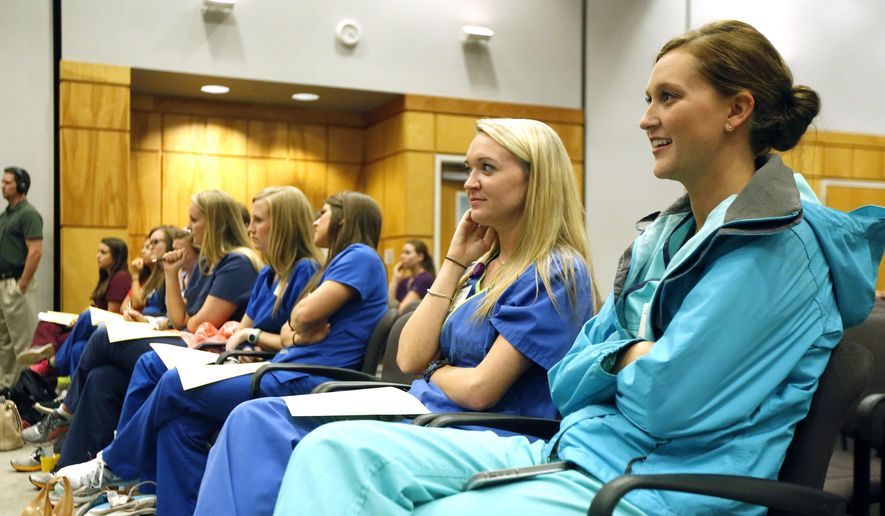For the first time ever, women make up the majority of U.S. medical school students this year, according to the Association of American Medical Colleges.
Women just barely surpassed the number of men enrolled in medical schools, comprising 50.5% of the student population.
The milestone builds upon earlier turning points for women in 2017 and 2018.
In 2017, women accounted for most of first-year students in medical schools. Last year, they made up the majority of medical school applicants.
“This is a welcomed milestone,” said Dr. John Prescott, the AAMC’s chief academic officer. “Women have long been the majority of U.S. college graduates, but have lagged behind in the number pursuing medical school.”
Dr. Jacqueline Fincher, president-elect of the American College of Physicians, said she personally thinks it’s wonderful that more women are attending medical schools.
“Women make phenomenal physicians,” Dr. Fincher said. “And more women in medicine, as well as a diverse physician workforce that reflects the populations we serve, just means better care from a physician of your choice that connects with you and with whom you have confidence and trust.”
According to the AAMC, women “reached the cusp of the majority” in total enrollment last year, making up 49.5% of all medical school students, up from 46.9% in 2015.
Dr. Roberta Gebhard, president of the American Medical Women’s Association, said that although women occupy about half of the classes in medical school, there is still a very small percentage of women leaders in medicine.
She noted that much more work needs to be done to achieve an equitable medical workplace for women.
“There needs to be a safe workplace free from sexual harassment, where there is equal opportunity for advancement and transparency with equal pay for equal work,” Dr. Gebhard said.
While the number of female applicants and enrollees rose this year, the number of male applicants and enrollees declined.
Meanwhile, more racially and ethnically diverse students are filling medical school classes as well, but the AAMC says they are still “significantly underrepresented” in the overall physician workforce.
Medical school applicants who identified as Hispanic or Latino increased 5.1% to 5,858, and enrollees grew 6.3% to 2,466 in 2019, AAMC data reveals. The number of black applicants rose 0.6% to 5,193, and enrollees increased by 3.2% to 1,916. American Indian or Alaska Native applicants increased by 4.8% to 586, and enrollees grew by 5.5% to 230.
“We welcome these increases, but they are simply not enough. We must do more to educate and train a more diverse physician workforce to reflect a more diverse nation,” Dr. Prescott said. “Diversifying the physician workforce is critical as the U.S. population — and thus, the patient population — grows increasingly diverse.”
Medical school enrollment overall has increased in the last few years, but the U.S. faces an ongoing shortage of about 20,000 physicians — which has hit the South the hardest. By 2032, the AAMC predicts the nation will face a shortage of up to 122,000 physicians.
The total number of medical school applicants rose by 1.1% in 2019, setting a record of 53,371. The number of enrollees rose by 1.1% as well to 21,869.
Since 2002, medical schools have seen a 58% increase in applicants and a 33% jump in enrollment, says the AAMC. The increases have been partially credited to growing class sizes and the opening of 20 new medical schools in the past decade.
Dr. Atul Grover, the AAMC’s executive vice president, has said there needs to be a focus on expanding the number of hospital training positions to address the physician shortage.
Although medical school enrollment has increased, the growth in the number of hospital training programs lags behind due to a cap on federally-funded residency slots set by Congress in 1997.
Legislation has been introduced in the House and the Senate that proposes increasing the number of Medicare-funded residency positions by 3,000 each year for five years starting in 2021.
• Shen Wu Tan can be reached at stan@washingtontimes.com.




Please read our comment policy before commenting.